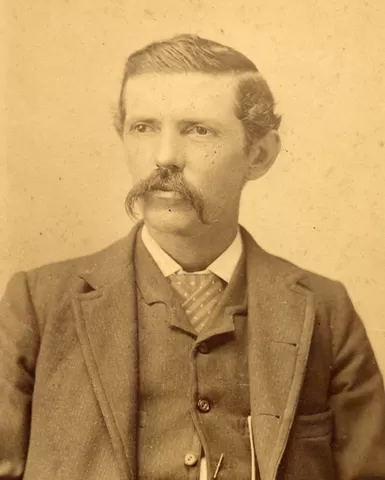Thomas Moore Rickards (1845-1928), Boca Raton’s first settler, was born in Ohio and raised in Missouri. He was well educated for his time and trained as a civil engineer. While traveling through Florida as a state surveyor, Rickards bought property on the New and Hillsborough rivers and 50 acres on the north shore of Lake Boca Raton.
He returned with his wife, Ann Elizabeth “Lizzy” and five children and built Boca Raton’s first house, on the east side of the Florida Coast Line Canal, which was later enlarged and renamed the Intracoastal Waterway. The two-story home with porches had water from a windmill and a tank on each floor. Rickards placed a toll chain across the canal by his home and collected tolls from passing boats.
The Florida East Coast Railroad (FEC) hired Rickards to promote the area to farmers who would ship their produce on the FEC. Rickards produced the first survey of Boca Raton, subdividing several hundred acres into ten-acre tracts. He sold the lots to northerners and started plantings for them of pineapples and orange trees. Rickards planted 50 acres of his own, called “Black Cat Plantation. ”
Rickards also planted orange groves for Henry Flagler and James Ingraham, president and vice president of the railroad. They gave him another job as agent for the Model Land Company, the real estate arm of the FEC. When Ingraham invited a Japanese group to start a farm colony in northern Boca Raton, he appointed Rickards to handle the arrangements. The first colonists arrived late in 1904 and established the Yamato Colony. (see Morikami, George)
Rickards moved to North Carolina in 1906 after his groves and fields were destroyed by a hurricane in 1903.


